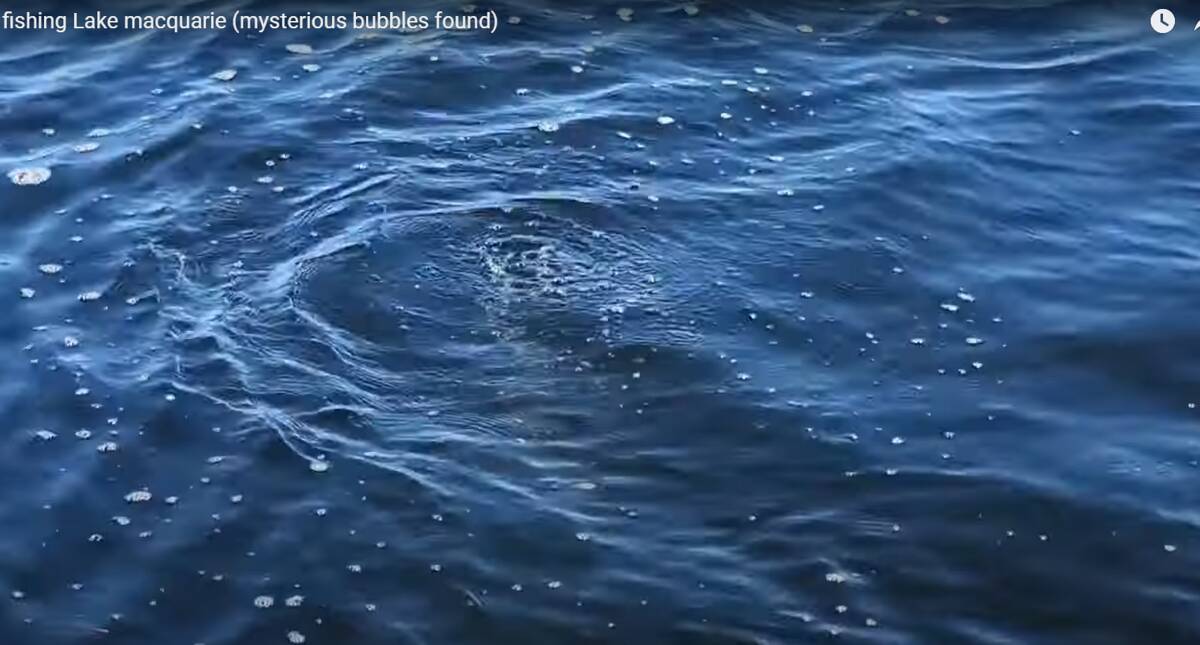
When we heard about strange bubbles in Lake Macquarie, the Loch Ness monster did come to mind.
The YouTube channel Hunter Fishing Adventures showed footage of the bubbles in southern Lake Macquarie, off the shore of Gwandalan.
There's been a big fish kill around that area - with the focus on Mannering Park. The NSW Environment Protection Authority is investigating the fish kill but made no comment on the bubbles.
"This is very interesting. There's just bubbles coming out of the water. It's almost like it's a gas leak or something," the host of Hunter Fishing Adventures said on his first video. "I don't know what's going on. It's bizarre. I've never seen anything like it. It's just like the bottom is bubbling away."
He said the bubbles were appearing in the lake "in the middle of nowhere and it's like there's a scuba diver down there".
"It's just bubbles coming up constantly. No smell."
In a second video he posted on YouTube, the host looked at his depth sounder [also known as a fish finder]. These devices use sonar to map beneath the lake surface and under the lakebed.
In the spot where the bubbles were rising, the area beneath the lakebed appeared to show "a hollow".
"It's almost like the ground is aerated. I think this should be looked at, especially after this fish kill we've had.
"I'm concerned what kind of gas it is. Is this harmful to me right now? Is it a methane gas? Is it a coal seam gas? Is it natural gas?"
Coal mining does happen under the lake, but it's unclear if this is linked to the bubbles.
The NSW EPA suspected oxygen depletion caused the fish kill, which can be linked to flood water.
When a lot of organic material washes into a waterway, its rapid decay can consume dissolved oxygen from the water.
If this dissolved oxygen drops to very low levels, this can cause "hypoxic water", which can stress and kill native fish.
Furthermore, decomposing organic matter on the lake bottom can produce methane, which can create bubbles.
This kind of methane is known as swamp gas or marsh gas.
The video host believed the area where he saw bubbles had a sandy bottom, rather than any decomposing organic matter.
University of Newcastle Associate Professor Troy Gaston, a marine ecologist, said "low dissolved oxygen can certainly trigger a fish kill".
"As for the bubbles, there could be a few reasons," Dr Gaston said.
He said organisms can make bubbles and gas can be released from the sediment due to "natural microbial activity".
"It will be interesting to see what the EPA find from their analyses."
Other fishers also commented on the bubbles on YouTube. A possible methane leak from a mine was suggested.
One post joked that it "might be a large turtle making the bubbles".
Ian Forbes, who said he used to work for the EPA, wrote: "Sometimes lakes 'turn over' when there's not enough mixing of water. It's a natural phenomenon. It can cause gas."
When a lake turns over, cooler water on the bottom of the lake mixes with warmer water at the top of the lake. This can cause small bubbles to rise to the surface.
One person commenting on the YouTube video suggested the bubbles could be an "underground volcano".
Perhaps. But we're going with the Lake Macquarie monster.
WHAT DO YOU THINK? We've made it a whole lot easier for you to have your say. Our new comment platform requires only one log-in to access articles and to join the discussion on the Newcastle Herald website. Find out how to register so you can enjoy civil, friendly and engaging discussions. Sign up for a subscription here.







